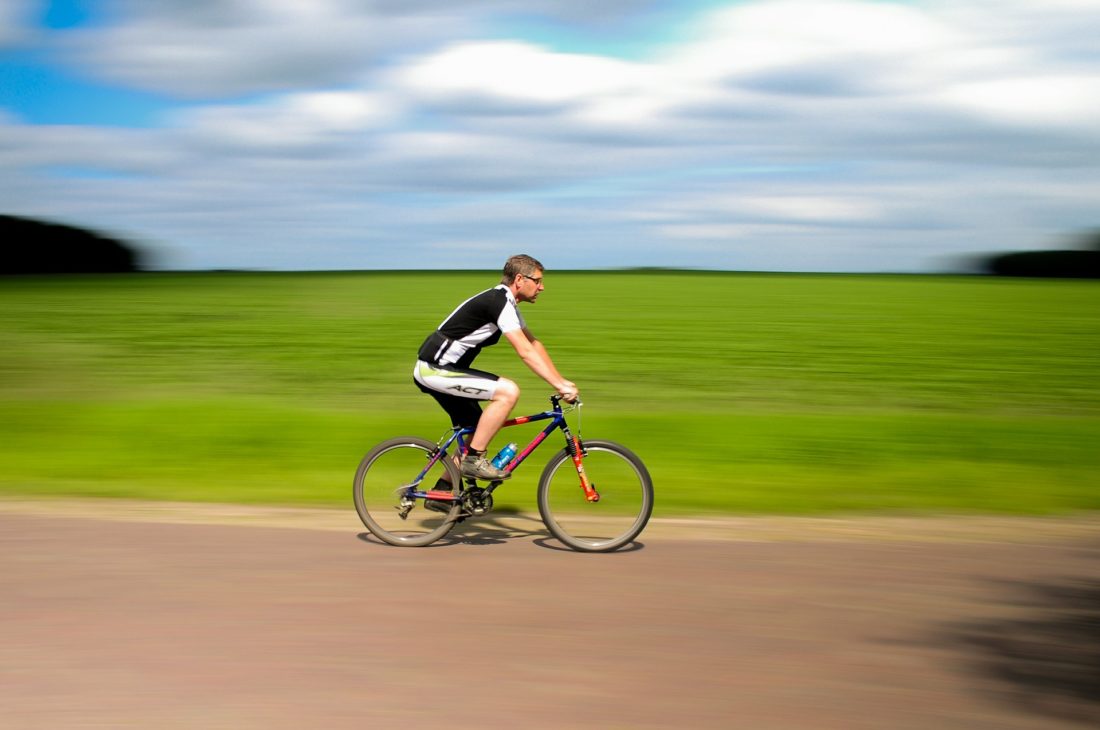Want to Get Into Cycling? 10 Tips for First-Timers
 Have you always wanted to get into cycling? With summer around the corner, now’s as good a time as any. Depending on your goals, cycling can be a cost- and fuel-efficient way to run errands or commute to work, a fast-paced workout, a way to enjoy the great outdoors, or an opportunity to meet lots of new like-minded people. If you’re like most cyclists, you’re probably trying to achieve some combination of these motives.
Have you always wanted to get into cycling? With summer around the corner, now’s as good a time as any. Depending on your goals, cycling can be a cost- and fuel-efficient way to run errands or commute to work, a fast-paced workout, a way to enjoy the great outdoors, or an opportunity to meet lots of new like-minded people. If you’re like most cyclists, you’re probably trying to achieve some combination of these motives.
Unfortunately, even if you technically know how to ride a bike, getting into cycling can be intimidating. That’s why we’ve come up with a short list of tips to help you get acclimated to your new hobby—and potentially, a new lifestyle to go along with it.
Tips for First-Time Cyclists
These tips can help you stay safe, save money, and learn more about the hobby as quickly as possible:
- Understand the risks. First, do take the time to understand the risks of bicycling. Car accidents are notoriously common, but the better you understand traffic laws and the more safety precautions you take, the more accidents you’ll be able to survive, or prevent entirely. Take the time to learn about problematic intersections in your city and local traffic laws, as well as which roads are and aren’t “bike friendly.”
- Get proper protective gear. Before you start thinking seriously about which bike to get, make sure to invest in the proper protective gear. At a minimum, you should have a helmet that fits your head appropriately. You may also want protective gloves for your hands and wrists, and clothing that covers your body in the event of a crash.
- Don’t worry about the “perfect” bike. With thousands of available models, choosing a bike can be intimidating—but it doesn’t have to be. Don’t get overwhelmed by the options. Instead, determine what main type of bike you want (e.g., a mountain bike, a road/racing bike, or a hybrid bike) and how much you’re willing to spend. After that, your range of options will be seriously reduced.
- Do get your bike fitted. No matter what type of bike you want to get, do work with a local bike shop to get it fitted appropriately. A bike that fits you well will be easier to ride, more comfortable, and less likely to result in physical injury.
- Start on familiar territory. Before you start exploring new trails and roadways, spend some time biking on roads and trails you already know. That way, you can get used to your new bike and your physical abilities in safe, familiar territory.
- Ramp up your mileage slowly. You’ll likely be eager to ramp up your weekly mileage, but doing too much, too fast can result in physical injury, leaving you too sore or too frustrated to bike at all. Instead, increase your mileage slowly, and monitor your physical condition closely.
- Stretch after every ride. Another good way to prevent physical injuries is to stretch after every ride, while your muscles are still warm. Thoroughly stretching your body will make it more flexible, reducing your chances of getting hurt through overexertion, overextension, or acute damage.
- Learn how to change a flat. Sooner or later, every cyclist is going to deal with a flat tire. Getting stranded in the middle of nowhere isn’t fun, so it’s important for you to learn how to deal with a flat. Ideally, you’ll carry a patch kit and a spare tube (along with a hand pump) with you, but if you don’t know how to use these things, they’re practically useless. Fortunately, you don’t need an in-depth knowledge of bike mechanics to get the job done. Practice changing a tire while you aren’t stranded, so you have the experience necessary when you’ll need it most.
- Get your bike inspected regularly. If you don’t know much about bike mechanics, take your bike to a professional to have it inspected and tuned up on a regular basis—ideally at least once a year. They’ll be able to catch small problems before they become big problems, and can keep your bike in good working order.
- Meet other cyclists. Go out of your way to meet other cyclists. They’ll teach you how your bike works and can tell you about the best trails in the area. More importantly, they’ll motivate you to go on more rides.
Finding What Matters Most
There are countless good reasons to stay active as a cyclist, but chances are, you’ll find value in some applications more than others. Take your time exploring the possibilities available to you, but don’t be afraid to gravitate toward the paths, roads, or lifestyle choices that you enjoy most—even if they aren’t conventional.









